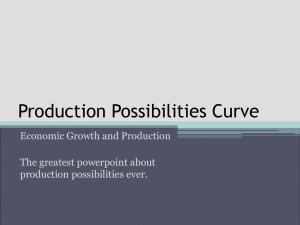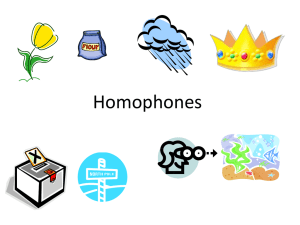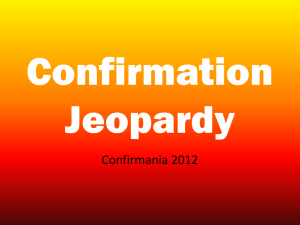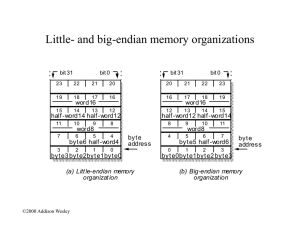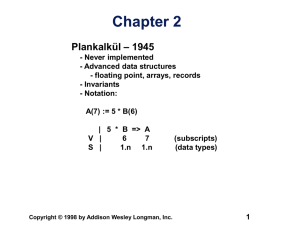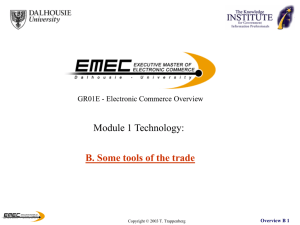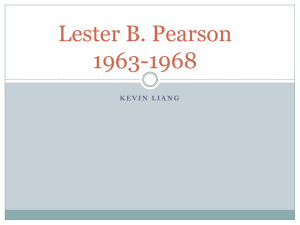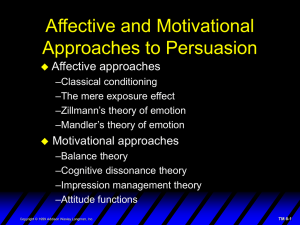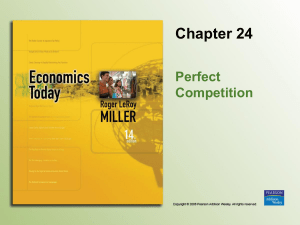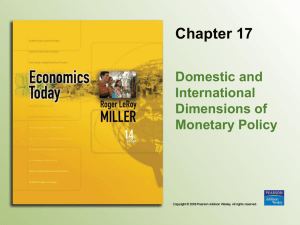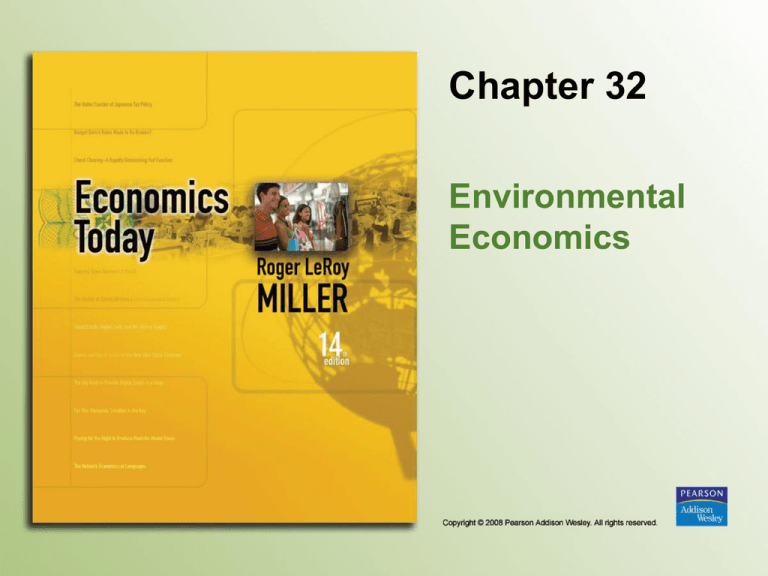
Chapter 32
Environmental
Economics
Introduction
Many people see wild horses as a living
symbol of the nation’s natural beauty,
while others regard them as pests.
One thing is certain: U.S. taxpayers
spend more than $50 million per year on
more than 50,000 wild horses and 5,000
of their cousins, wild burros.
Copyright © 2008 Pearson Addison Wesley. All rights reserved.
32-2
Learning Objectives
• Distinguish between private costs and
social costs
• Understand market externalities and
possible ways to correct externalities
• Describe how economists can
conceptually determine the optimum
quantity of pollution
Copyright © 2008 Pearson Addison Wesley. All rights reserved.
32-3
Learning Objectives (cont'd)
• Explain the roles of private and common
property rights in alternative approaches
to addressing the problem of pollution
• Discuss how the assignment of property
rights may influence the fates of
endangered species
• Contrast the benefits and costs of recycling
scarce resources
Copyright © 2008 Pearson Addison Wesley. All rights reserved.
32-4
Chapter Outline
• Private versus Social Costs
• Correcting for Externalities
• Pollution
• Common Property
• Wild Species, Common Property
and Tradeoffs
• Recycling
Copyright © 2008 Pearson Addison Wesley. All rights reserved.
32-5
Did You Know That...
• Every decision involving the environment
involves a tradeoff?
• The economic way of thinking about
endangered species requires considering
the costs of protecting them?
• Economists want to help us opt for informed
policies that have maximum net benefits?
Copyright © 2008 Pearson Addison Wesley. All rights reserved.
32-6
Private versus Social Costs
• Private Costs
Costs borne solely by the individuals who
incur them
Also called internal costs
Copyright © 2008 Pearson Addison Wesley. All rights reserved.
32-7
Private versus Social Costs (cont'd)
• Social Costs
The full costs borne by society whenever a
resource use occurs
Measured by adding internal to
external costs
Copyright © 2008 Pearson Addison Wesley. All rights reserved.
32-8
Private versus Social Costs (cont'd)
• Environmental issues occur when
social costs exceed private cost.
• The cost of polluted air—consider both
private and social costs
• Question
What if you had to pay the social cost of
driving a car?
Copyright © 2008 Pearson Addison Wesley. All rights reserved.
32-9
Private versus Social Costs (cont'd)
• Externality
A situation in which a private cost
(or benefit) diverges from a social cost
(or benefit)
A situation in which the costs (or benefits)
of an action are not fully borne (or gained)
by the two parties engaged in a scarceresource-using activity
Copyright © 2008 Pearson Addison Wesley. All rights reserved.
32-10
Correcting for Externalities
• An externality arises when there is a
divergence between private cost and
social cost.
• The remedy is to change the signal for
decision making.
• In the case of industrial pollution, the
firm must be forced to internalize the
cost of the environmental damage.
Copyright © 2008 Pearson Addison Wesley. All rights reserved.
32-11
Figure 32-1
Reckoning with Full Social Costs
Copyright © 2008 Pearson Addison Wesley. All rights reserved.
32-12
Correcting for Externalities (cont'd)
• The polluters’ choice
1. Install pollution abatement equipment or
change production techniques
2. Reduce pollution-causing activity
3. Pay the price to pollute
Copyright © 2008 Pearson Addison Wesley. All rights reserved.
32-13
Correcting for Externalities (cont'd)
• Is a uniform tax appropriate?
It may be appropriate to levy a uniform tax,
as external costs might vary from location
to location.
We must establish the amount of
economic damages; we have to come up
with a measure of economic costs.
Copyright © 2008 Pearson Addison Wesley. All rights reserved.
32-14
Policy Example: Belgian Governments
Forgo a Uniform Tax and Kill Off Jobs
• In 2004, DHL announced plans to expand
its operations in Brussels.
• The expansion correlated with an increase
in late-night flights.
• National and regional Belgian
governments objected.
• DHL moved 1,300 jobs to Leipzig, Germany.
Copyright © 2008 Pearson Addison Wesley. All rights reserved.
32-15
Pollution
• Question
How much pollution is too much?
• Answer
The optimal quantity is determined by a
comparison of marginal costs and benefits.
Copyright © 2008 Pearson Addison Wesley. All rights reserved.
32-16
Figure 32-2
The Optimal Quantity of Air Pollution
The optimal quantity
of pollution occurs
where MC = MB
Copyright © 2008 Pearson Addison Wesley. All rights reserved.
32-17
Pollution (cont'd)
• Optimal Quantity of Pollution
The level of pollution for which the
marginal benefit of one additional unit of
pollution abatement just equals the
marginal cost of that additional unit
Copyright © 2008 Pearson Addison Wesley. All rights reserved.
32-18
International Policy Example:
Canada Confronts a High Marginal Cost
of Pollution Abatement
• Under the Kyoto protocol, Canada
promised that it would reduce
emissions of global warming gasses.
• Since signing the treaty, Canada’s
emissions have actually increased by
1.5% per year.
Copyright © 2008 Pearson Addison Wesley. All rights reserved.
32-19
International Policy Example:
Canada Confronts a High Marginal Cost
of Pollution Abatement (cont'd)
• Canada’s government continues to
promise that the nation will reach its
promised level of emissions.
• Although the estimated explicit and
opportunity costs to the entire Canadian
economy would be at least $30 billion
per year.
Copyright © 2008 Pearson Addison Wesley. All rights reserved.
32-20
Common Property
• Private Property Rights
Exclusive rights of ownership that allow the
use, transfer, and exchange of property
Copyright © 2008 Pearson Addison Wesley. All rights reserved.
32-21
Common Property (cont'd)
• Common Property
Property that is owned by everyone and
therefore by no one
Examples
are air and water
Copyright © 2008 Pearson Addison Wesley. All rights reserved.
32-22
Common Property (cont'd)
• Question
What do you think: Why does
pollution occur when property rights
are poorly defined?
• Answer
When no one owns a particular resource,
no one has any incentive (conscience
aside) to consider misusing it.
Copyright © 2008 Pearson Addison Wesley. All rights reserved.
32-23
Common Property (cont'd)
• Voluntary agreement and
transactions costs
Is it possible for externalities to be
internalized via voluntary agreement?
What are the costs incurred by the parties
who seek to negotiate an agreement?
Copyright © 2008 Pearson Addison Wesley. All rights reserved.
32-24
Common Property (cont'd)
• Voluntary agreement and
transactions costs
Voluntary agreements: contracting
Opportunity cost always exists, whoever
has property rights.
Copyright © 2008 Pearson Addison Wesley. All rights reserved.
32-25
Common Property (cont'd)
• Voluntary agreement and
transactions costs
Transaction Costs
All
costs associated with making, reaching, and
enforcing agreements
Must be low relative the expected benefits
Copyright © 2008 Pearson Addison Wesley. All rights reserved.
32-26
Common Property (cont'd)
• Changing property rights
Closing the gap between private costs and
social costs
Taxation
Subsidization
Regulation
Copyright © 2008 Pearson Addison Wesley. All rights reserved.
32-27
Common Property (cont'd)
• Are there alternatives to pollutioncausing resource use?
Why aren’t we shifting to solar panels and
electric cars?
Could manufacturing solar panels
cause pollution?
Copyright © 2008 Pearson Addison Wesley. All rights reserved.
32-28
Example: Profiting by Generating
Electricity from Thin Air in Ireland
• The northern portion of Ireland abounds
with farmland.
• Although the extreme northern tip of the
country is too rugged to farm.
• Yet numerous landowners in this part of
Ireland generate revenues.
Copyright © 2008 Pearson Addison Wesley. All rights reserved.
32-29
Example: Profiting by Generating
Electricity from Thin Air in Ireland (cont'd)
• The source of the landowner’s earnings
is not the land itself, but the steady
winds that blow across it.
• Several companies now harness
the winds to power turbines that
generate electricity.
Copyright © 2008 Pearson Addison Wesley. All rights reserved.
32-30
Wild Species, Common Property,
and Trade-Offs
• One of the most distressing common
property problems involves endangered
species.
• Virtually all species not endangered are
private property (dogs, cats, cattle, sheep
and horses).
• Endangered species (spotted owls,
bighorn sheep and condors) are typically
common property.
Copyright © 2008 Pearson Addison Wesley. All rights reserved.
32-31
Wild Species, Common Property,
and Trade-Offs (cont'd)
• In 1973, the federal government passed
the Endangered Species Act in an
attempt to keep species from dying out.
• As more and more species were put
on the endangered list, a trade-off
became apparent.
Copyright © 2008 Pearson Addison Wesley. All rights reserved.
32-32
Recycling
• Recycling
The reuse of raw materials derived from
manufactured products
Copyright © 2008 Pearson Addison Wesley. All rights reserved.
32-33
E-Commerce Example: Boom Times
in Personal Computer Recycling
• In a typical year, owners of more than 2
billion pounds of unwanted electronic
equipment pay 400 companies nearly
$1 billion to find something to do with it.
• Recycling firms profit from charging
businesses and individuals to collect
their computers, remove data, refurbish
and resell them.
Copyright © 2008 Pearson Addison Wesley. All rights reserved.
32-34
Recycling (cont'd)
• Recycling’s invisible costs
Costs include
Resources
Pollution
used in recycling
created during recycling
Copyright © 2008 Pearson Addison Wesley. All rights reserved.
32-35
Recycling (cont'd)
• Landfills
An argument in favor of recycling is to
avoid using landfills.
Data indicate we are not running out of
solid waste landfill sites.
Expansion of solid waste disposal sites
may be outpacing demand.
Copyright © 2008 Pearson Addison Wesley. All rights reserved.
32-36
Recycling (cont'd)
• Should we save scarce resources?
Some resources may not be getting
scarcer at all.
The inflation-corrected price of most
resources has been falling for decades.
Copyright © 2008 Pearson Addison Wesley. All rights reserved.
32-37
Issues and Applications:
The Government’s Climbing Costs
to Protect Wild Horses
• The common property problem
• Confronting transaction costs in caring
for wild horses
• Turning again to the private sector
Copyright © 2008 Pearson Addison Wesley. All rights reserved.
32-38
Summary Discussion
of Learning Objectives
• Private costs versus social costs
Private costs are borne solely by those
who use resources.
Social costs are the full costs that society
bears when resources are used.
• Market externalities and ways to
correct externalities
Tax those who create externalities
Copyright © 2008 Pearson Addison Wesley. All rights reserved.
32-39
Summary Discussion
of Learning Objectives (cont'd)
• Determining the optimal amount of pollution
The level of pollution at which the marginal benefit
of pollution abatement equals the marginal cost of
pollution abatement
• Private and common property rights and the
pollution problem
Private property rights permit exchange and use
of a resource.
Common property is owned by everyone and thus
by no one.
Copyright © 2008 Pearson Addison Wesley. All rights reserved.
32-40
Summary Discussion
of Learning Objectives (cont'd)
• Endangered species and the
assignment of property rights
Animals that are privately owned (e.g.,
dogs and livestock are abundant)
Owners
have incentives to take care of
these animals.
Wild animals are common property
resources and many are endangered
because no one has an incentive to
protect these animals.
Copyright © 2008 Pearson Addison Wesley. All rights reserved.
32-41
Summary Discussion
of Learning Objectives (cont'd)
• Benefits and costs of recycling
Benefits
Limits
use of natural resources
Costs
Recycling
uses resources
Copyright © 2008 Pearson Addison Wesley. All rights reserved.
32-42
End of
Chapter 32
Environmental
Economics

